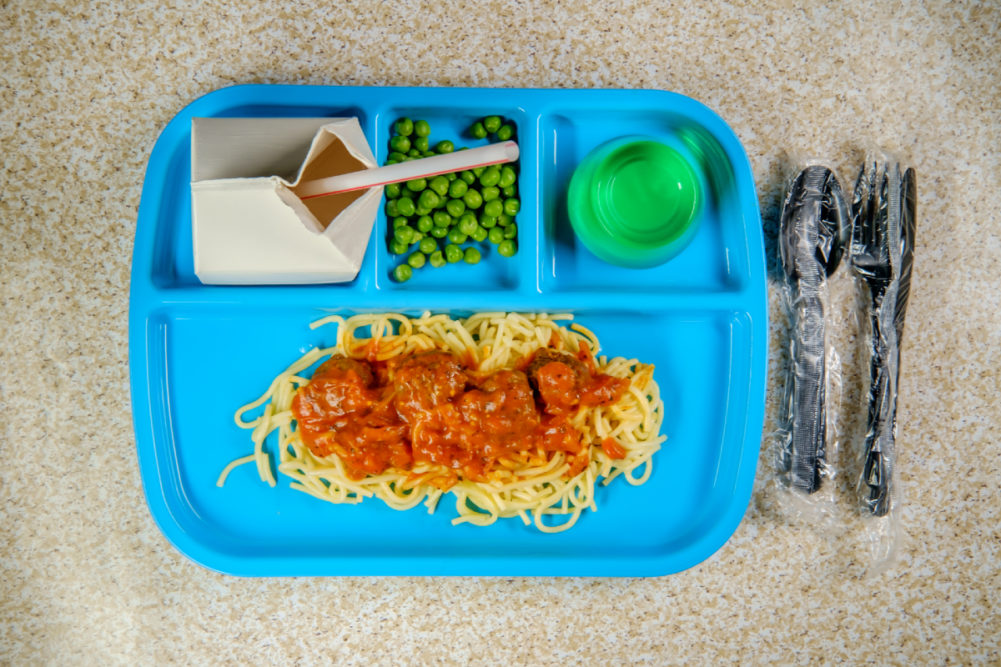WASHINGTON – The US Department of Agriculture (USDA) is seeking to reduce the added sugars and further reduce the sodium formulated into school meals, according to a final rule published April 24 in the Federal Register.
The agency is planning to implement a two-phase approach to lowering added sugars levels. Phase 1 will target the added sugar content of specific products and phase 2 will establish weekly limits.
Beginning July 1, 2025, breakfast cereals served in schools may have no more than 6 grams of added sugars per dry ounce; yogurt may have no more than 12 grams of added sugars per 6 oz (2 grams of added sugars per oz); and flavored milk may have no more than 10 grams of added sugars per fluid oz or, for flavored milk sold as a competitive food for middle and high schools, 15 grams of added sugars per 12 fluid oz.
International Dairy Foods Association (IDFA) president and chief executive officer Michael Dykes applauded the final rule, which preserved schools’ ability to serve flavored milk in all grades, as long as the product meets IDFA’s Healthy School Milk Commitment guidelines – school milk processors committed to providing options with no more than 10 grams of added sugar per 8 fluid oz serving.
Dykes called school meals a “nutrition lifeline” for US children.
“The final meal pattern rules released today by USDA will expand dairy options that appeal to children by providing a variety of healthy, nutritious and delicious dairy options that meet the needs of kids of all backgrounds,” Dykes said. “For example, approximately 70% of all milk consumed in school meals is flavored milk. By offering nutritious flavored milk options in grades K-12 consistent with IDFA’s Healthy School Milk Commitment, parents and school foodservice directors can have confidence that America’s students will get the same essential nutrients with fewer calories and less added sugars than ever before.”
Beginning July 1, 2027, in addition to the product-based limits included in phase 1, the USDA established a dietary specification limiting added sugars to less than 10% of calories across the week in the school lunch and breakfast programs.
“Schools have many ways to reduce the amounts of added sugars in their menus, such as using fruit as a sweetener in recipes and reducing the frequency of high-sugar items offered during the week,” the USDA said.
“As we have repeatedly made clear, the Sugar Association supports the Dietary Guidelines for Americans (DGA) recommendation to limit added sugars to 10% of total calories, as part of healthy dietary patterns,” said Courtney Gaine, president and CEO of the Sugar Association. “While limiting added sugars to 10% of each week’s school meals menu is consistent with the DGA, applying arbitrary sugar limits to individual products like cereals and flavored dairy is certainly not.”
The USDA also is focused on further reducing the amount of sodium school children consume. Beginning July 1, 2027, schools will implement an approximate 15% reduction in sodium for lunch and an approximate 10% reduction for breakfast from the current sodium limits. The reductions will mean children eating school lunches that are in kindergarten through 5th grade will be limited to no more than 935 mg of sodium; children in grades 6th to 8th will be limited to 1,035 mg; and children in grades 9th to 12th will be limited to 1,080 mg. For breakfast, the groups will be limited to 485 mg, 535 mg and 570 mg, respectively.
In the rule, the USDA emphasized that the limits apply to the average amount of sodium in lunch and breakfast menus offered during a school week. The sodium limits do not apply per day, per meal, or per menu item.
The USDA also updated how it defines the phrase “whole-grain rich” to indicate the grain content of a product is between 50% and 100% whole grain with any remaining grains being enriched.
“This definition aligns with the current definition and meaning of whole grain-rich in school meals, which was previously included only in USDA policy guidance,” according to the agency.
The IDFA shared its satisfaction with aspects of the USDA’s final rule, such as making sure lactose-free milk will be an option in reimbursable meals, as well as other dairy products with low lactose content. Dykes also said IDFA appreciated school meal sodium targets remaining the same through 2026-27.
Nevertheless, Dykes said the IDFA was disappointed that the final rule set an added sugar limit for yogurt, calling it “out of step” with the 2020-2025 DGA.
“As an essential meat alternative for many children, consumption of yogurt has also been associated with higher diet quality in children, higher intake of multiple nutrients – including calcium, potassium, magnesium and vitamin D – and lower incidence of cardiovascular risk factors in adolescents, particularly total and excess abdominal body fat,” Dykes said.
He added that the school meal patterns update overall represented a positive step “to correct chronic underconsumption of dairy foods by America’s youth.”

